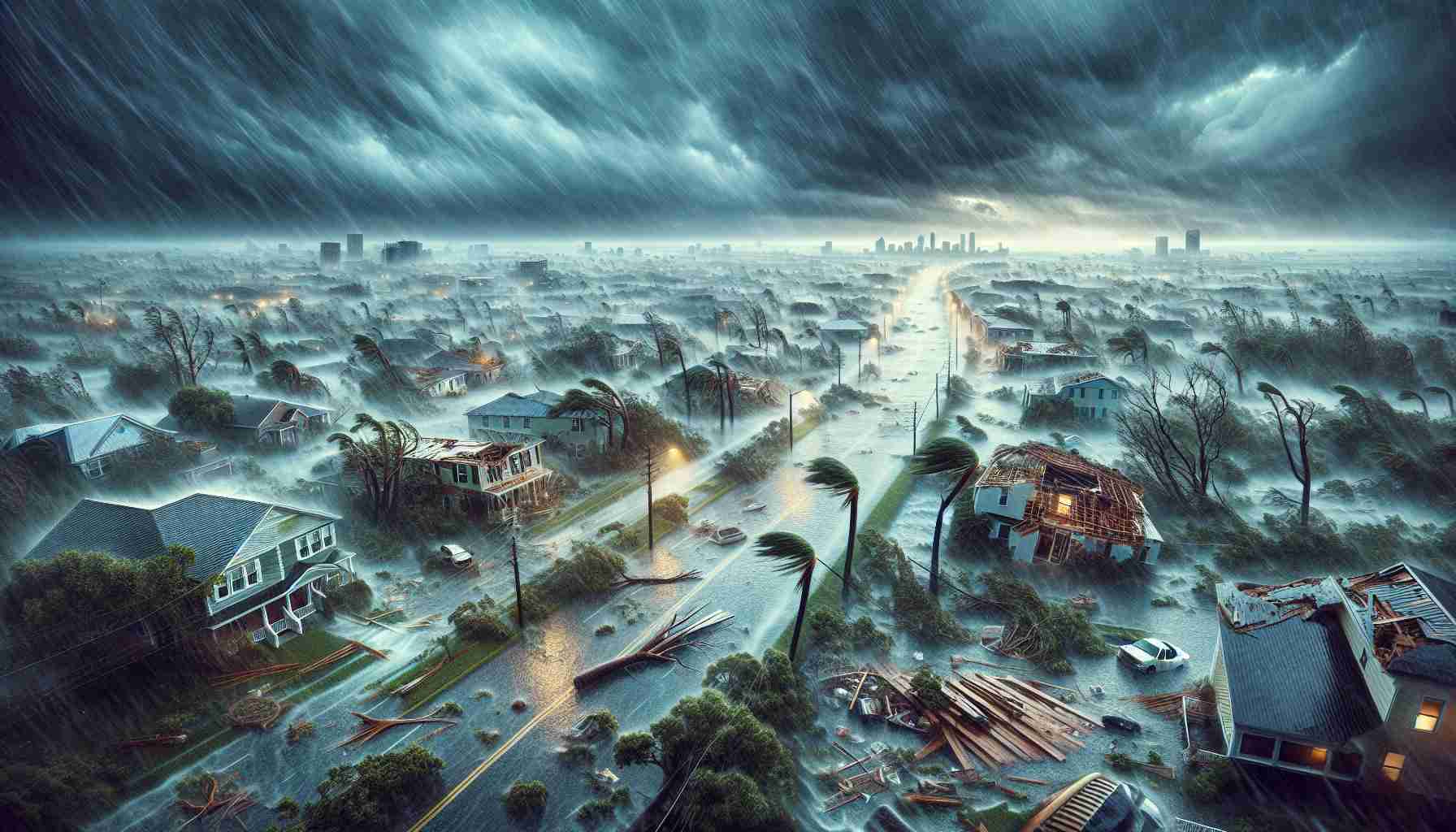
Hurricane Milton, categorized as a powerful Category 3 storm, has left a trail of devastation across Florida, leading to extensive damage that can be observed through satellite imagery. The images vividly illustrate the floodwaters inundating coastal regions and barrier islands, despite the expected storm surge not materializing. Heavy rainfall and fierce winds have caused significant destruction, with homes being damaged and power lines brought down.
St. Armands Key, near Sarasota, is depicted in satellite photos showcasing submerged streets following the hurricane’s passage. Similar images from Ana Maria Island reveal residences awash in water and littered with debris from the storm. Neighborhoods are experiencing sand accumulation along their main roads due to the fierce winds.
Before-and-after visuals from a condo complex in Cortez highlight stark changes to the landscape, with debris scattered and roofs damaged. Another image showcases the Tropicana Field, home of the Tampa Bay Rays, which was previously utilized as a staging area for emergency response. The intense winds have torn significant sections of the stadium’s roof, although initial reports confirm no injuries occurred at the site.
In an unexpected twist during the evacuation, a man captured video of an alligator emerging from floodwaters while driving, illustrating the added dangers posed by wildlife amidst the chaos. Wildlife specialists warned residents of such threats, as the hurricane not only wreaked havoc with strong winds but also opened pathways for apex predators in flood conditions.
Hurricane Milton has devastated Florida, leaving communities grappling with recovery in its wake. New reports reveal that the destruction extends beyond immediate physical damage, affecting the environment, economy, and public health.
The impact of Hurricane Milton is being felt in numerous ways. Factoring in the storm’s aftermath, the estimated economic toll could exceed $5 billion, according to initial assessments. This includes not only property damage but also losses in tourism, fishing, and agriculture. The hurricane struck during the peak of the tourism season, which raises concerns for local businesses already struggling from the effects of the COVID-19 pandemic.
Health and safety concerns are also climbing as residents face potential waterborne diseases due to flooding. Contaminated water supplies may contribute to outbreaks of illnesses such as cholera or leptospirosis. Authorities emphasize the need for cautious behavior regarding drinking water and sanitation practices.
Key questions are emerging around recovery efforts:
1. How are first responders managing the situation?
– First responders are working around the clock, conducting rescues and ensuring the safety of residents. Emergency services have mobilized additional resources from other states to assist in affected areas.
2. What are the primary challenges surrounding infrastructure repair?
– Major challenges include downed power lines and road blockages due to debris. Restoration of utility services, especially electricity, is a priority and is expected to take weeks in some areas.
3. How is wildlife being affected by the hurricane?
– The flooding has altered habitats, posing risks as displaced animals, including alligators, seek refuge and food in human-populated areas. This increase in wildlife interactions may lead to more dangerous encounters, prompting warnings from experts.
Advantages and disadvantages of the recovery efforts are becoming apparent.
Advantages:
– The influx of support from federal agencies and neighboring states has expedited rescue operations and resource allocation.
– Community resilience is evident as volunteer groups emerge to assist in recovery and provide food, clothing, and shelter for those in need.
Disadvantages:
– The reconstruction process may face bureaucratic delays, affecting the speed at which aid is delivered to impacted residents.
– Long-term impacts on the local economy could lead to a prolonged recovery, particularly in tourism-dependent areas.
Looking ahead, sustainable rebuilding strategies are being discussed to better prepare for future disasters. Many advocates are pushing for more resilient infrastructure that can withstand severe weather events, particularly as climate change continues to intensify storm activity.
As the situation unfolds, local and national organizations are developing resources to help communities navigate the post-hurricane landscape. For more information on disaster recovery and resources available, consider visiting: FEMA.



